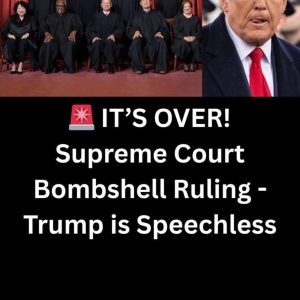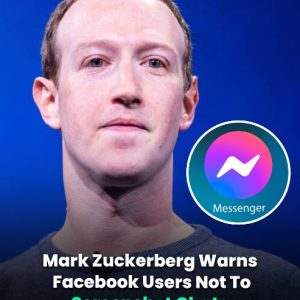Donald Trump’s recent pledge to deliver a $2,000 dividend payment to nearly all Americans has generated widespread attention, debate, and confusion, not only in political circles but also among economists, analysts, and the general public. In his announcement posted on Truth Social, Trump defended his tariff-centered economic strategy and argued that these tariffs were producing extraordinary fiscal benefits for the country. He claimed that the government was receiving “trillions of dollars” in tariff revenue, insisting that these funds came with “almost no inflation” and could therefore be used to pay down the national debt while simultaneously financing direct payments to citizens. The message was crafted to sound both generous and economically empowering, suggesting that the average American could directly benefit from policies that the former president framed as tough but lucrative. Yet the post lacked essential details such as who would qualify, how the payments would be administered, or when the program would begin. This vagueness immediately raised questions among experts who study federal revenue, budgetary limitations, and the legal constraints surrounding tariffs. For many readers, the announcement sounded bold and attractive, particularly at a time when economic uncertainty still affects millions of Americans; however, for specialists familiar with revenue flows and legislative processes, the proposal appeared deeply problematic from the moment it was introduced.
Economists quickly began scrutinizing Trump’s claims, pointing out that tariff revenue—even under the most favorable projections—does not come close to the “trillions” he suggested. According to experts interviewed by multiple outlets, including The Guardian, tariff revenue has historically been a relatively small source of federal income compared to overall government spending. Tax analyst Erica York explained that tariff revenue brought in roughly $90 billion, which is far less than what would be required for such a sweeping program. If every American were to receive $2,000, the estimated cost would fall between $300 billion and $513 billion, depending on how eligibility was defined. Even restricting payments to low- and middle-income households—something Trump hinted at by excluding “high-income earners”—would still demand a level of funding that current tariff revenues simply cannot support. Analysts highlighted that for tariff income to reach the numbers Trump mentioned, imports would have to occur at extraordinarily high levels and tariff rates would need to be drastically increased, potentially triggering retaliation from foreign governments and destabilizing global trade relations. Furthermore, tariffs function essentially as taxes on imported goods, which means the costs are typically passed on to consumers in the form of higher prices. Some economists suggested that Trump’s claim of “almost no inflation” contradicts established economic patterns, because tariff hikes, by design, increase costs and therefore exert inflationary pressure on households.
In addition to financial feasibility concerns, legal issues further complicate the proposal. Trump’s tariff authority has already been challenged in multiple courts, with several lower courts ruling that the presidential use of emergency powers to impose certain tariffs was unlawful. The issue has now reached the U.S. Supreme Court, which must determine whether the previous administration overstepped its constitutional authority in levying tariffs under the pretext of national security. If the Supreme Court decides against Trump’s legal rationale, the foundation of the proposed dividend program would be effectively dismantled. Tariffs would need to be reevaluated, reduced, or entirely removed depending on the ruling, meaning there would be no revenue source available to support the promised payouts. This is not a minor procedural hurdle; it is a direct threat to the very mechanism Trump claims would fund the dividends. Legal experts emphasized that even if the Court upholds certain tariffs, it is highly unlikely that the executive branch would be granted unilateral authority to redirect tariff revenue toward universal cash payments without congressional approval. The legal ambiguity has left even some of Trump’s supporters uncertain about the durability and legitimacy of the pledge, causing many to question whether it was made for political momentum rather than practical implementation.
As the controversy grew, Trump attempted to provide clarity by telling reporters that the $2,000 payments would begin “next year,” placing the start date sometime in 2026. However, this clarification created its own complications. For one, promising payments for a future year—especially one that depends on both election outcomes and congressional cooperation—adds layers of uncertainty. Treasury Secretary Scott Bessent later addressed the issue more cautiously, noting that any such program would require formal legislation. According to Bessent, Congress would need to authorize the payments, outline the eligibility guidelines, and determine how the revenue would be allocated. This emphasizes a fundamental principle of American government: the president does not have sole authority over federal spending. Any dividend of this scale would need bipartisan legislative support, a difficult prospect in a politically polarized environment. Economists also noted that even if Congress approved the payments, the United States would likely have to finance the majority of the program through debt, since tariff revenue alone falls far short of the required amount. This is particularly relevant at a time when concerns about national debt are already escalating. The notion that tariff-generated funds could simultaneously pay down debt and provide widespread dividends contradicts basic fiscal math, prompting further skepticism from both parties.
Despite the doubts, Trump’s promise has captured public attention, in part because financial pledges resonate differently than policy pledges. Policy promises—such as changes to regulations, immigration reform, or foreign policy adjustments—tend to fade into the background for many voters, especially if they involve complex processes or long timelines. Financial promises, however, strike at the heart of daily life; people remember when they are told they will receive money, and they remember if that money never arrives. This was evident during the COVID-19 pandemic, when stimulus checks became a major political touchpoint. The idea of receiving $2,000 directly from the government carries emotional weight, especially for families still recovering from economic hardships, inflation, or housing instability. For Trump, the announcement may be strategically designed to appeal to lower- and middle-income voters who feel overlooked by the political system. Yet this strategy comes with significant risk. A promise this specific and this generous is unlikely to be forgotten or forgiven if it remains unfulfilled. Political analysts have noted that once a leader places a dollar amount in the public consciousness, expectations solidify quickly. Failure to deliver can harm credibility, particularly among undecided voters or those who have been economically struggling.
Ultimately, Trump’s $2,000 dividend proposal highlights a broader dynamic in modern political communication: bold promises often attract immediate attention, but they require structural, financial, and legal support that is far more complicated than the announcement itself suggests. While the idea of redistributing tariff revenue to the American people may sound appealing, the realities of budget limitations, legal barriers, and economic implications make the promise appear difficult, if not impossible, to achieve under current conditions. The gap between what tariffs generate and what the proposal requires is enormous, and no clear mechanism has been provided to bridge that divide. Furthermore, the legal challenges surrounding Trump’s tariff authority threaten the foundation of the plan, while congressional approval remains a significant obstacle. By presenting the proposal without concrete details, timelines, or funding pathways, Trump has created a sense of anticipation mixed with doubt. Some Americans may feel hopeful about the possibility of receiving direct financial support, while others view the promise as a political maneuver crafted to energize supporters rather than to deliver practical results. Whether the proposal becomes a defining element of Trump’s platform or fades into the long list of ambitious-but-unrealized promises remains to be seen, but one thing is certain: financial promises, especially promises of thousands of dollars per person, carry a weight that cannot be easily dismissed, and the public will remember them long after the political moment has passed.





